Exploring the magnificent Ha Giang Loop in September offers travelers a perfect balance of favorable weather and stunning natural beauty. The region’s climate during this transitional month creates ideal conditions for discovering breathtaking mountain passes, emerald-green rice terraces, and authentic ethnic villages. Understanding Ha Giang weather September patterns is essential for any visitor hoping to experience this remote northern province at its best, with milder temperatures and decreasing rainfall setting the stage for unforgettable adventures along Vietnam’s most spectacular scenic route.
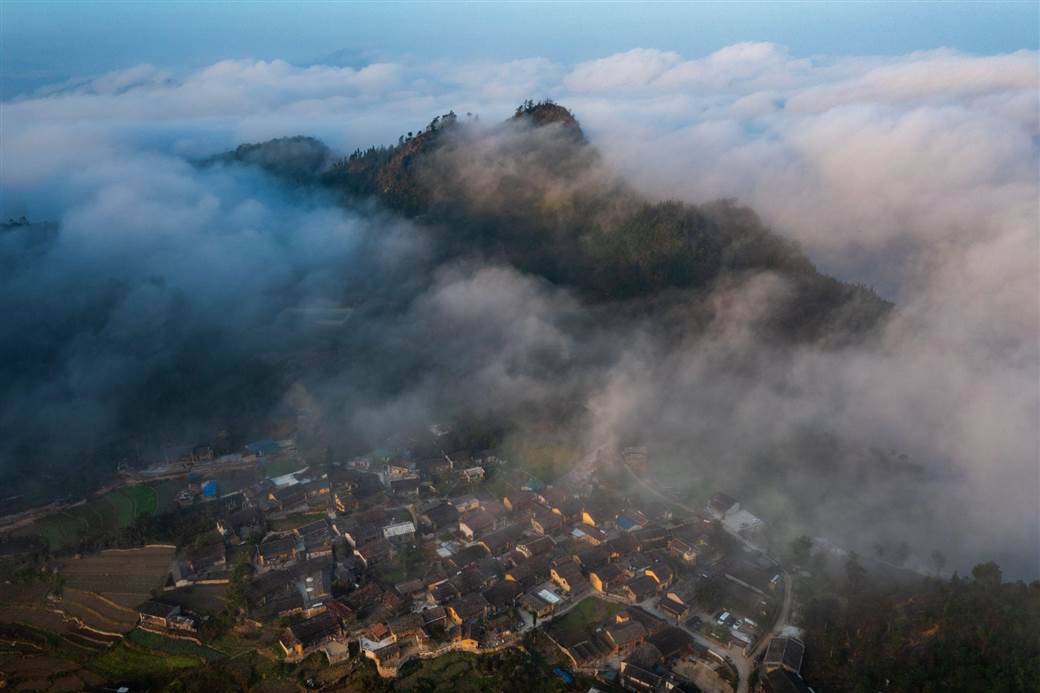
1. Overview: Is September a Good Month for Ha Giang Travel?
September marks the beginning of autumn in Ha Giang, making it one of the most pleasant times to visit this mountainous region. As the summer monsoon season gradually retreats, the province experiences a significant decrease in rainfall compared to the preceding months. Temperatures remain comfortable, typically ranging between 22-28°C (72-82°F) during daytime, creating ideal conditions for exploring the famous Ha Giang Loop.
For travelers considering when to visit Ha Giang, September offers several distinct advantages. The landscape transitions beautifully during this period, with rice terraces beginning to turn golden in many areas, especially toward the latter part of the month. Mountain views become increasingly clear as fog and clouds diminish, revealing the dramatic karst formations that make this region famous.
Tourism numbers in September remain relatively low compared to the October-November peak season, meaning less crowded viewpoints and a more authentic experience at popular attractions like Ma Pi Leng Pass and Dong Van Karst Plateau. Local accommodations and guides are also more readily available, often at better rates than during high season. This combination of improving weather, stunning seasonal landscapes, and fewer tourists makes September an excellent choice for visitors seeking the true essence of Ha Giang.
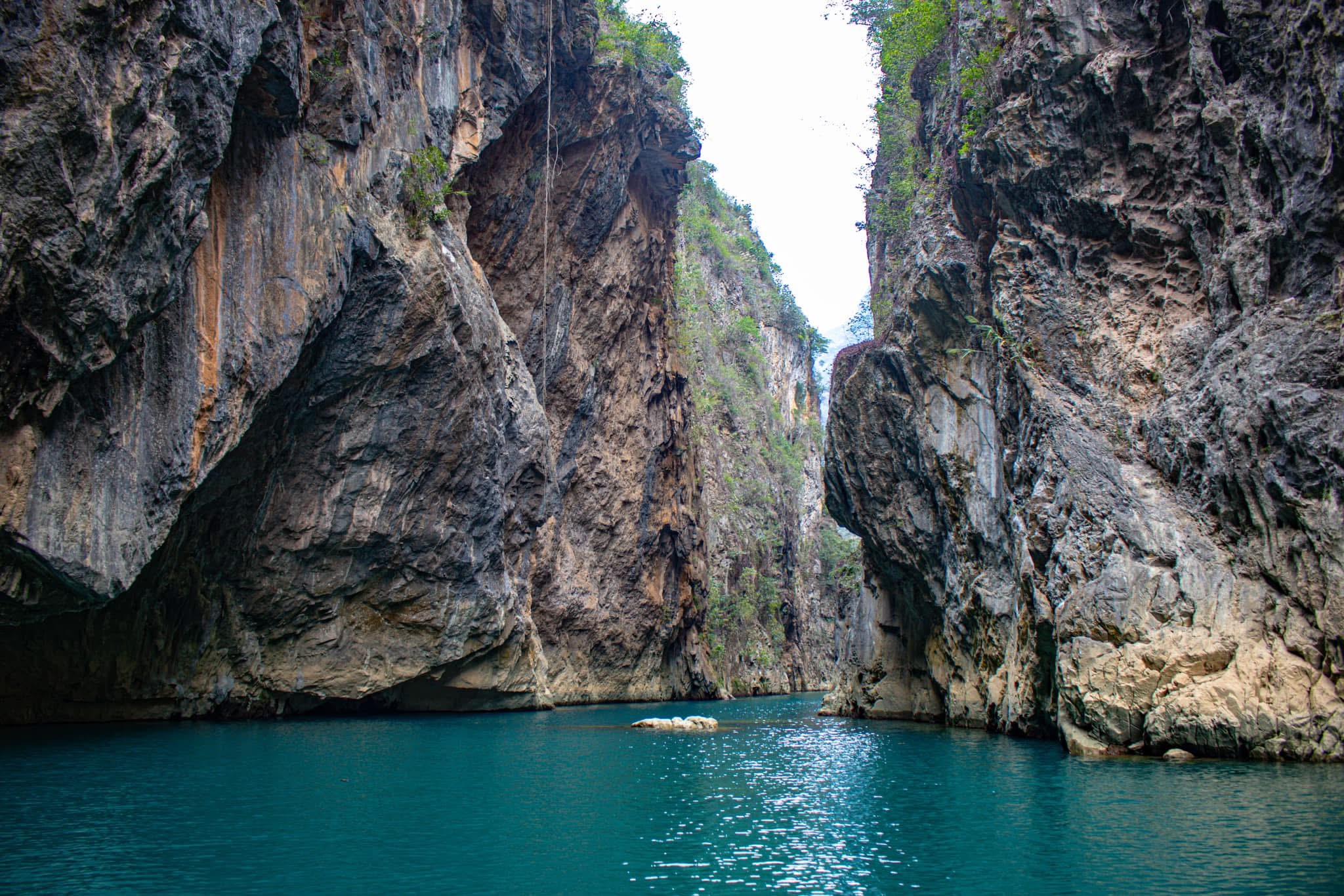
The Best Time to Visit Ha Giang: A Seasonal Guide to Flowers & Festivals
2. Detailed Weather Statistics & Historical Trends
Understanding the precise weather patterns in Ha Giang during September helps travelers prepare appropriately for their journey. Historical data shows that September represents a transition from the wet summer season toward the drier autumn months. Average temperatures range from lows of 19°C (66°F) to highs of 28°C (82°F), creating comfortable conditions for outdoor activities throughout the day.
2.1 Daytime vs Nighttime Temperatures
September brings noticeable temperature variations between day and night in Ha Giang. During daytime hours, temperatures typically peak around 26-28°C (79-82°F), providing warm but not oppressive conditions for motorbiking and trekking. As evening approaches, the mercury drops considerably, with nighttime temperatures averaging 19-21°C (66-70°F) in lower elevations and potentially dropping to 15-17°C (59-63°F) in higher mountainous areas like Dong Van and Meo Vac.
This day-night temperature difference becomes more pronounced as the month progresses. Early September resembles August with warmer nights, while late September shows a stronger cooling trend, especially in the higher elevations. The pleasant temperature pattern makes September ideal for combining daytime exploration with comfortable evenings at local homestays, where the cool mountain air provides natural relief after a day of adventure.
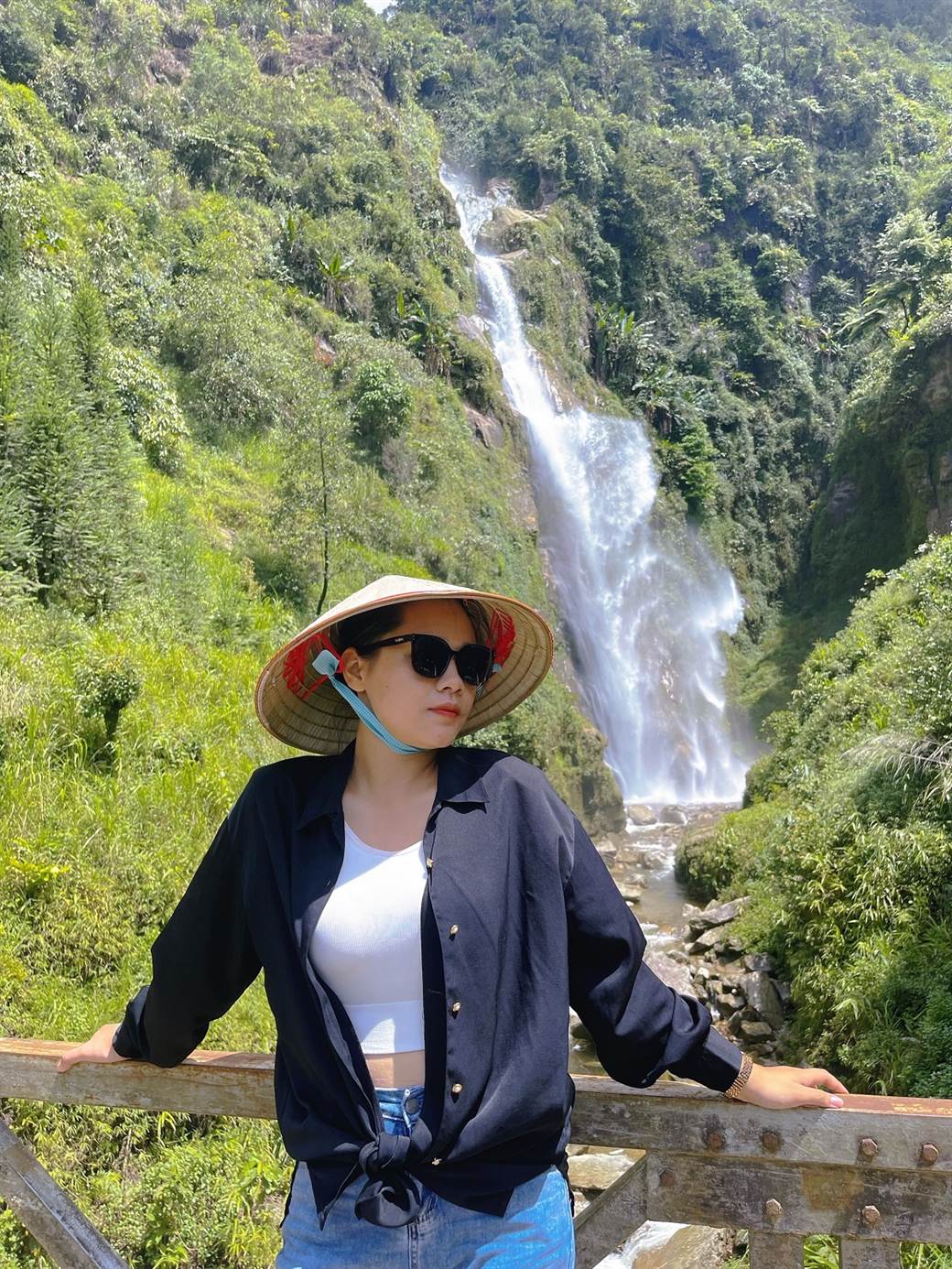
2.2 Rainfall Patterns & Humidity
September marks a significant reduction in rainfall compared to the peak monsoon months, though occasional showers remain part of the weather pattern. The month averages 10-12 rainy days, with precipitation totaling approximately 180-220mm – about half the rainfall of August. Most precipitation occurs in the form of afternoon showers rather than all-day downpours, allowing for morning activities with minimal interruption.
Humidity levels begin their gradual decline during September, averaging 80-85% at the beginning of the month and often dropping to 75-80% by month’s end. This decreasing trend continues through autumn, eventually reaching the more comfortable dry-season levels. The combination of reduced rainfall and gradually decreasing humidity means September visitors experience fewer weather-related disruptions while enjoying increasingly clear skies and visibility, particularly in the latter half of the month.
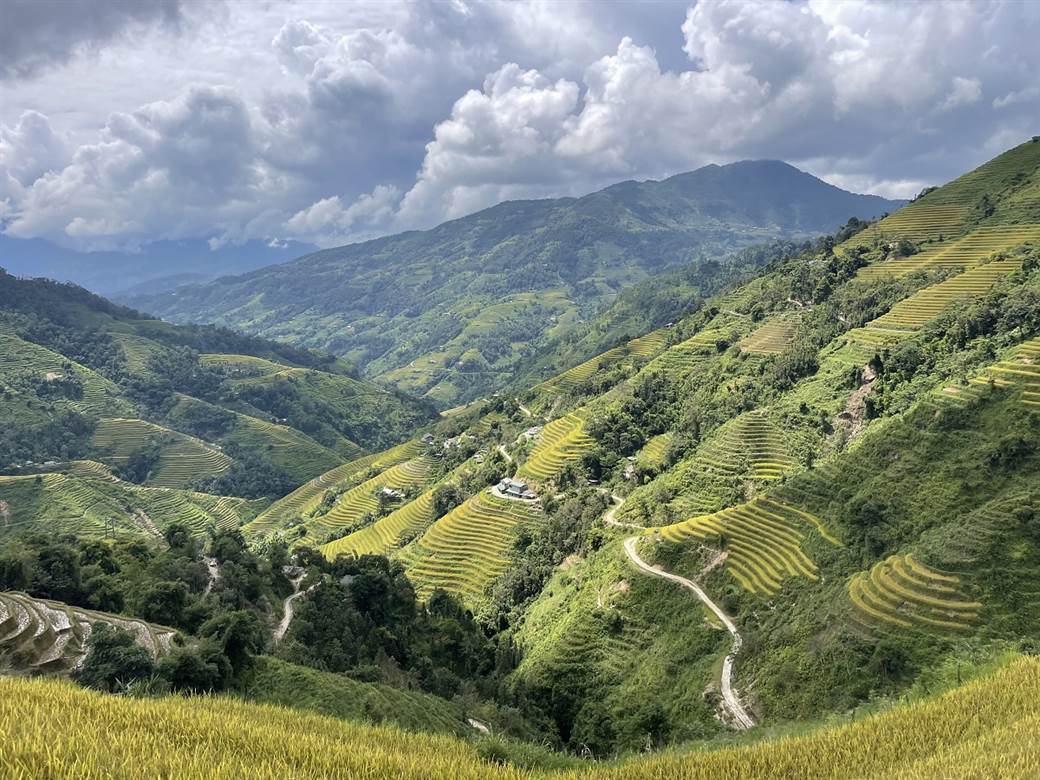
2.3 Fog, Sun Hours, Wind
Morning fog remains a characteristic feature of Ha Giang’s September weather, especially in valley areas and higher elevations. These misty mornings typically burn off by 9-10 AM, revealing stunning landscapes bathed in clear light. This natural phenomenon creates magical photographic opportunities at viewpoints like Heaven’s Gate in Quan Ba or the Twin Mountains.
Daily sunshine hours increase progressively throughout September, averaging 5-6 hours compared to the 3-4 hours typical of summer months. This improved sunshine ratio enhances visibility across the region’s dramatic landscapes. Wind conditions remain generally mild during September, with occasional stronger breezes at exposed mountain passes like Ma Pi Leng, where wind speeds can reach 10-15 km/h (6-9 mph).
The decreasing cloud cover as the month progresses translates to more reliable weather for outdoor activities and photography. By late September, the clearer atmospheric conditions provide sharper visibility of distant mountains, deeper blue skies, and more dramatic lighting for capturing Ha Giang’s spectacular scenery.
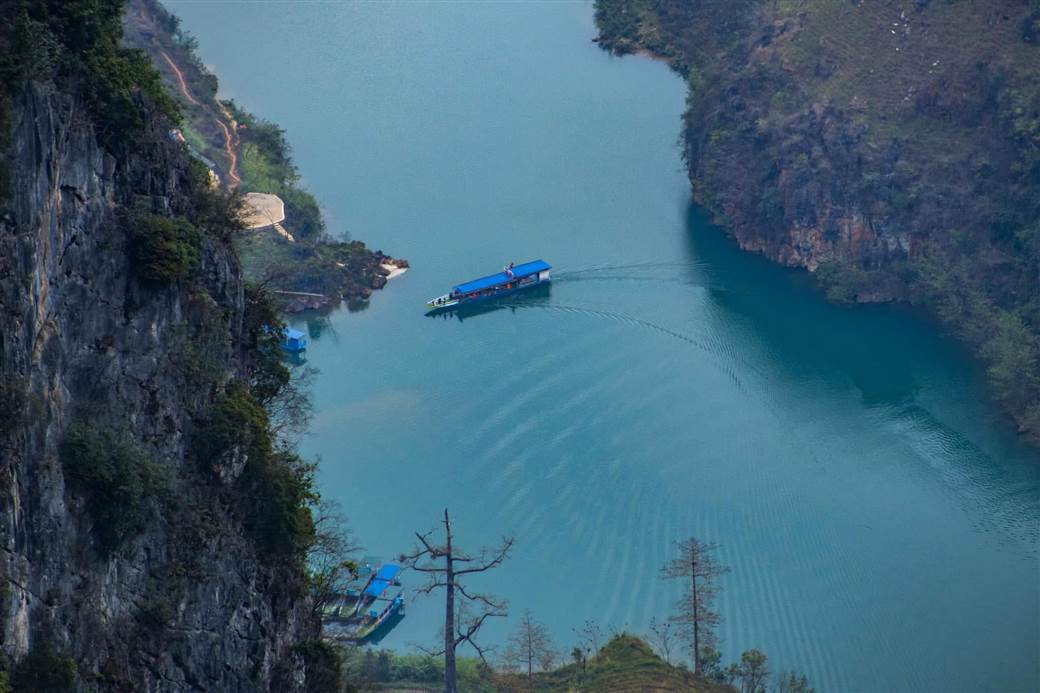
Ha Giang weather by month complete local guide for travelers
3. What to Expect: Day-to-Day Weather Variability
September in Ha Giang brings considerable day-to-day weather variability as the region transitions from wet summer to dry autumn. While general trends show improving conditions, travelers should prepare for rapid weather changes, particularly in high-elevation areas. Morning sunshine can quickly give way to afternoon cloud buildup and brief showers, especially during early September.
Microclimates play a significant role in Ha Giang’s weather patterns. The province’s complex topography creates distinct weather zones, with valley floors, mid-slopes, and mountain peaks often experiencing different conditions simultaneously. For instance, Dong Van Plateau might enjoy clear skies while lower-lying areas near Ha Giang City experience light rain, or vice versa.
Temperature fluctuations become more pronounced as September progresses. Early month visitors might experience consistently warm days and mild nights, while those traveling in late September will notice cooler mornings and evenings, particularly above 1,000 meters elevation. This increasing temperature amplitude reflects the strengthening seasonal transition toward autumn, especially in the province’s northern districts bordering China.
3.1 Packing Essentials for September (Layers, Wet Weather Gear)
A well-planned packing strategy is crucial for enjoying Ha Giang’s variable September weather. The key approach is layering, which allows travelers to adapt quickly to changing conditions throughout the day. Start with a moisture-wicking base layer, add a light mid-layer for cooler mornings or evenings, and include a packable windbreaker or light jacket for higher elevations.
Despite the decreasing rainfall, waterproof gear remains essential for September travel. A lightweight, breathable rain jacket should always be accessible during rides or hikes, as afternoon showers can develop quickly. Quick-dry pants or convertible trekking pants offer versatility for changing conditions, while a small travel umbrella proves useful during brief showers when exploring villages on foot.
Experienced travelers recommend these additional items for September visits:
- A bandana or buff to protect against dust on drier roads.
- Lightweight, quick-dry clothing that can be layered or removed as temperatures change.
- Sunglasses and sunscreen for increasingly sunny days.
- A waterproof cover for backpacks or panniers.
- A thermal layer for early morning starts or evening meals at higher elevations.
With proper preparation, September’s variable weather becomes part of the adventure rather than an inconvenience. The changing conditions contribute to the dramatic lighting, misty mornings, and atmospheric experiences that make Ha Giang so captivating during this transitional season.
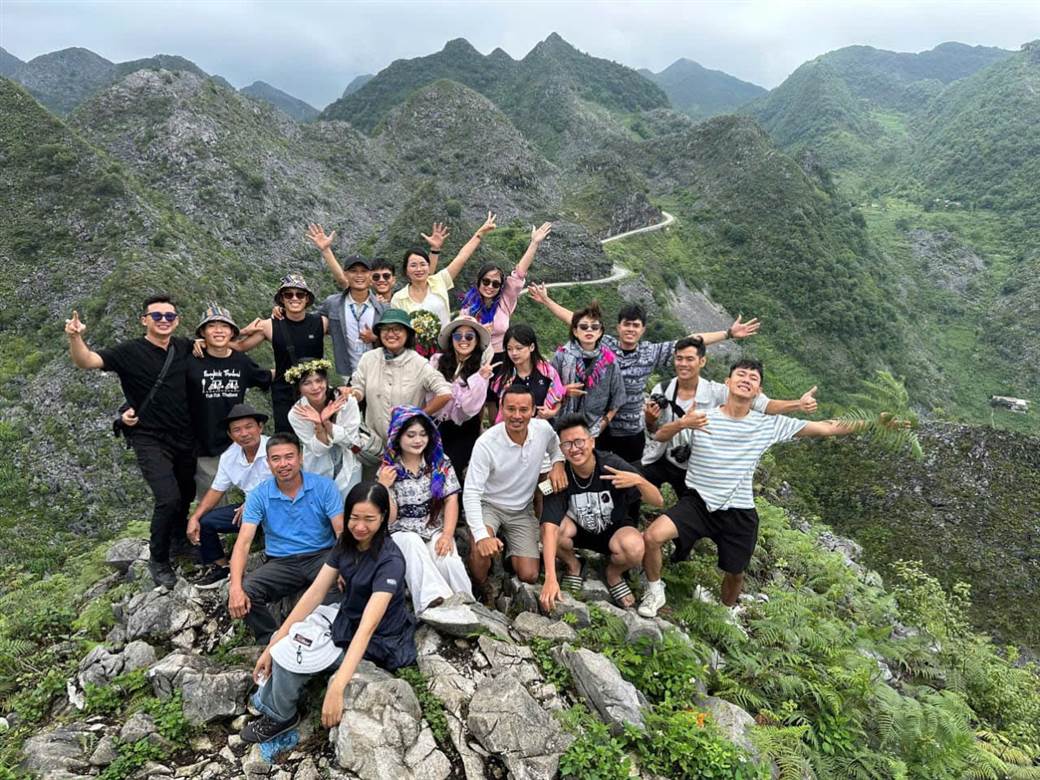
4. Impact on Activities: What to Do on the Ha Giang Loop in September
September’s improving weather creates excellent conditions for experiencing the Ha Giang Loop’s diverse activities. The reduced rainfall and increasing sunshine enhance road conditions and visibility, making this an ideal time to explore the region’s natural and cultural highlights. Travelers can take advantage of the comfortable temperatures to engage in both active adventures and more relaxed cultural experiences.
The transition toward autumn brings spectacular changes to Ha Giang’s agricultural landscape. Rice terraces begin shifting from vibrant green to golden yellow, particularly in late September, creating stunning photographic opportunities throughout the loop. This transitional period offers visitors a chance to witness and document the harvest preparations that mark this important seasonal change in local communities.
Cultural interactions also benefit from September’s pleasant weather conditions. With outdoor community activities increasing as the rainy season recedes, visitors have more opportunities to observe or participate in daily life, from market gatherings to agricultural work. Many travelers report more meaningful encounters with ethnic minority communities during this shoulder season, when fewer tourists mean more authentic and unhurried exchanges.
4.1 Motorbiking & Trekking
Motorbiking the Ha Giang Loop becomes significantly more enjoyable in September as road conditions improve. The decreasing rainfall means fewer mudslides and water crossings, while still maintaining enough moisture to minimize dust on unpaved sections. Roads remain less crowded than in peak season, allowing for a more relaxed riding experience with ample stops for photography and spontaneous exploration.
September’s moderate temperatures create ideal conditions for combining motorbiking with short treks to viewpoints and villages. Popular hiking destinations like the path to Lung Cu Flag Tower or walks through Hmong villages near Dong Van become more accessible as trails dry out. The increasingly clear weather offers better distant views from elevated points, rewarding trekkers with panoramic vistas across the karst landscape.
For those seeking deeper immersion, September allows for longer day hikes in areas like:
- The terraced fields around Hoang Su Phi, where harvest activities begin.
- Forest trails near Du Gia, with reduced leech activity compared to summer months.
- Village-to-village walks in Quan Ba district, connecting scattered Dao and Hmong settlements.
- Scenic paths along the Nho Que River canyon, with improved access as water levels decrease.
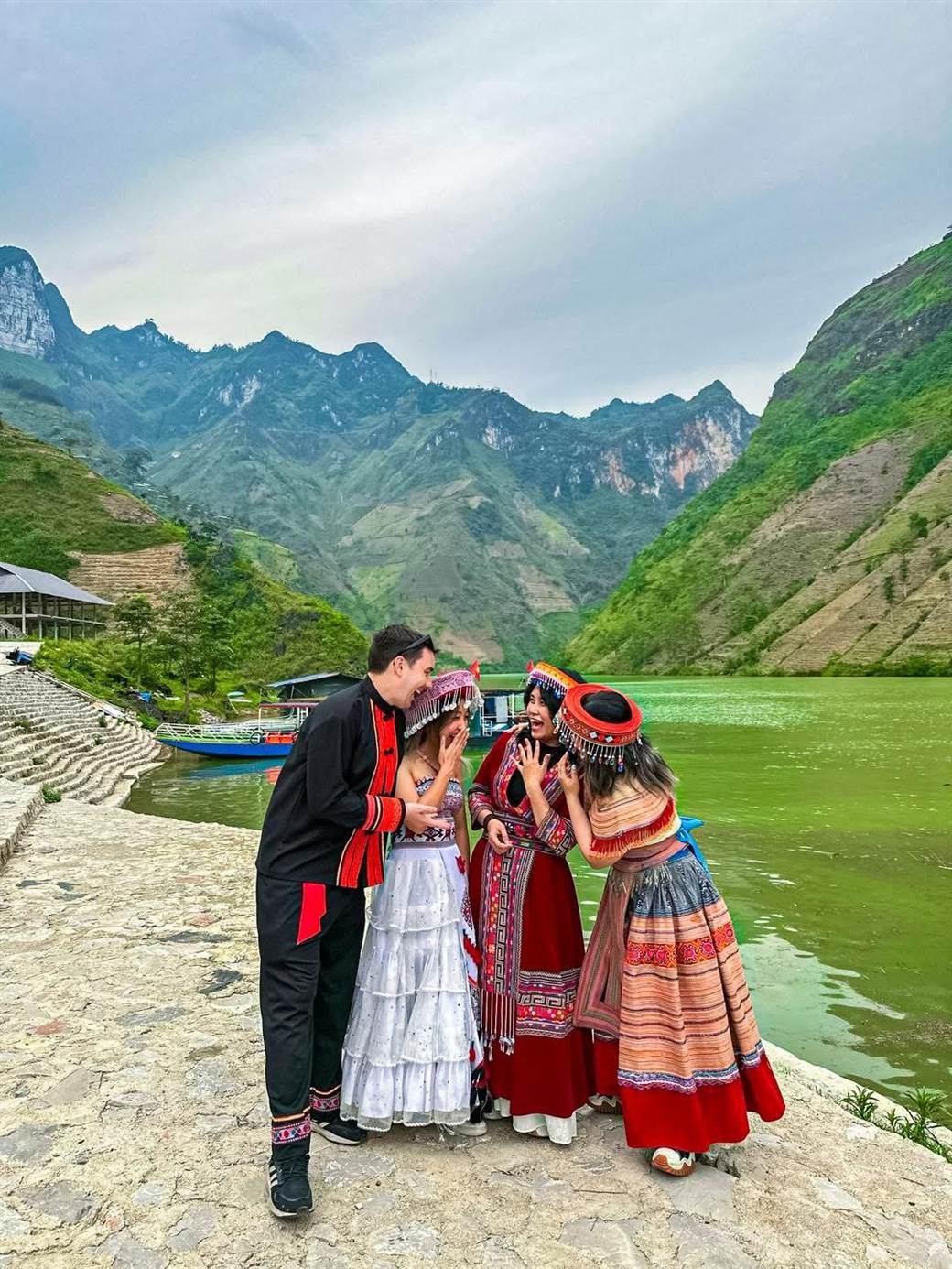
4.2 Boating & Rice Terrace Sightseeing
September’s decreasing rainfall creates ideal conditions for exploring the emerald waters of the Nho Que River. Boat trips through the impressive Tu San canyon become more reliable as water levels stabilize, offering spectacular views of the surrounding karst formations. The clearer skies enhance the visual contrast between the turquoise river and the gray limestone cliffs, creating breathtaking scenes for photography enthusiasts.
Rice terrace sightseeing reaches its peak as September progresses, especially in areas like Hoang Su Phi and Quan Ba. The fields transform from vibrant green to golden yellow, creating a patchwork of colors across the mountainsides. This transition period offers photographers a rare opportunity to capture both green and gold terraces in a single frame, with the contrast highlighting the sculptural beauty of these ancient agricultural landscapes.
Sunset viewing improves dramatically in September, with increasing clear evenings offering spectacular light across the terraced fields and limestone formations. Prime locations for sunset appreciation include the Heaven’s Gate viewpoint in Quan Ba, elevated points along the Ma Pi Leng Pass, and the terraced valleys near Lung Tam village. As tourist numbers remain moderate, visitors can often enjoy these magical moments in relative tranquility, especially on weekdays.
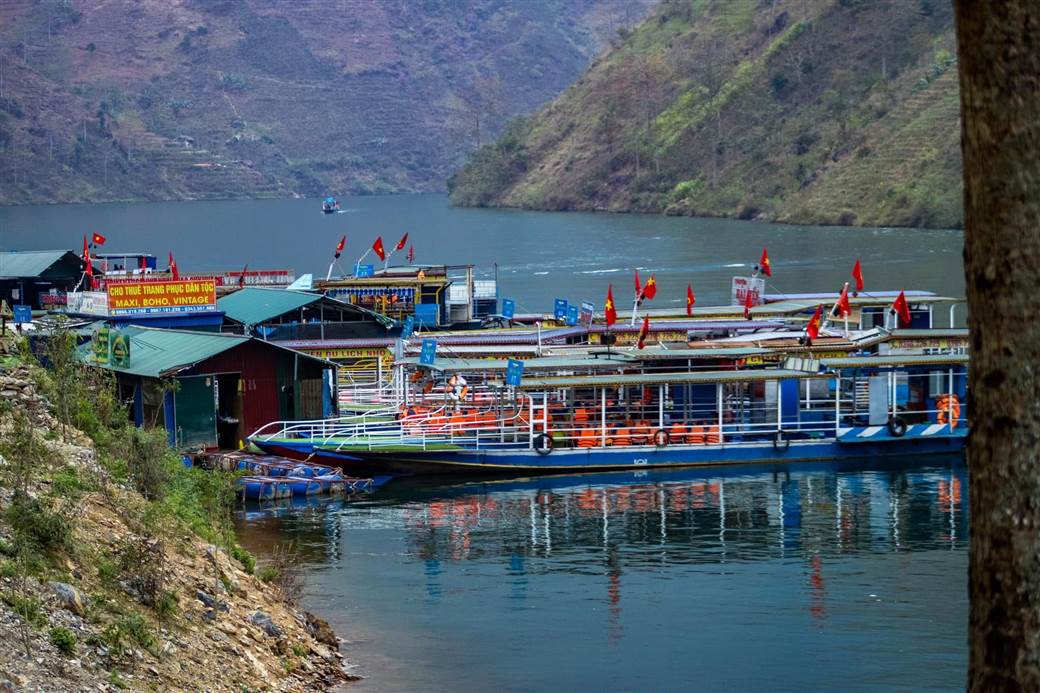
Top 4 rice fields Vietnam destinations & perfect times to go
5. Insider Tips: How Weather Affects Travel Logistics
September’s transitional weather patterns significantly influence travel logistics along the Ha Giang Loop. Local experts from Phieu Travel recommend building flexibility into itineraries, particularly during early September when weather unpredictability remains higher. Allowing an extra day or two provides a buffer against potential weather disruptions and opportunities to maximize experiences during clear periods.
Accommodation availability improves during September compared to peak season, but advance booking remains advisable for quality homestays and hotels. Many accommodations begin preparing for high season during this month, making it an excellent time to enjoy fully operational facilities with fewer crowds. Weekend trips still attract domestic tourists, so mid-week travel offers the best combination of availability and tranquility.
Communication infrastructure in Ha Giang has improved substantially in recent years, but weather-related service disruptions can still occur during heavy rain. Downloading offline maps, saving accommodation contact details, and informing someone of your itinerary remain prudent precautions. The increasingly reliable weather toward late September minimizes such concerns, but preparation ensures a smoother experience regardless of conditions.
5.1 Road Conditions & Safety
September’s decreasing rainfall progressively improves road conditions throughout the Ha Giang Loop. Early month travelers might encounter occasional muddy sections and minor roadworks repairing summer monsoon damage, particularly on secondary roads leading to remote villages. By mid-to-late September, most routes become increasingly dry and navigable, though morning fog can reduce visibility on mountain passes.
Safety considerations evolve with September’s changing weather patterns. Motorbike riders should remain vigilant for:
- Slippery sections in shaded areas that retain moisture longer.
- Increased agricultural activity with farmers and livestock on roadways during harvest preparation.
- Morning fog reducing visibility, particularly on high mountain passes before 9-10 AM.
- Occasional loose gravel or minor rockfalls following rain showers.
- Local trucks and machinery more active on roads as construction projects resume after the rainy season.
Professional guides from Phieu Travel emphasize that September riding requires adaptability to changing conditions throughout the day. Morning departures should account for potential fog delays at higher elevations, while afternoon plans should maintain flexibility for occasional rain showers. The improving conditions make self-guided tours increasingly viable as September progresses, though less experienced riders benefit from local guide accompaniment regardless of weather.
5.2 Alternative Routes
September’s variable weather creates opportunities to explore alternative routes that might be less accessible during wetter or drier months. As river levels remain sufficient while flood risks decrease, riverside routes like the scenic road from Du Gia to Meo Vac offer spectacular experiences with fewer hazards than during summer months. These alternatives often reveal less-visited villages and viewpoints away from the standard loop itinerary.
For travelers experiencing localized poor weather, having prepared alternative plans proves valuable. When rain affects northern sections near the Chinese border, shifting activities southward toward Hoang Su Phi or Ha Giang City often leads to better conditions. Experienced guides recommend these weather-adaptive route modifications:
- If fog persists at Ma Pi Leng Pass, explore lower-elevation villages near Meo Vac instead, returning to the pass later when conditions improve.
- When morning rain affects Dong Van, redirect to the more sheltered Lung Tam linen village, which offers indoor cultural experiences.
- If northern sections experience heavy rain, consider the southeastern loop through Bac Me and Hoang Su Phi as an alternative.
- During prolonged cloudy periods, focus on cultural experiences in ethnic villages rather than viewpoint-based activities.
These flexible routing strategies, informed by local weather knowledge, allow travelers to maximize their September experience regardless of day-to-day conditions. As the month progresses, such adaptations become less necessary with the increasingly stable weather patterns of late September.
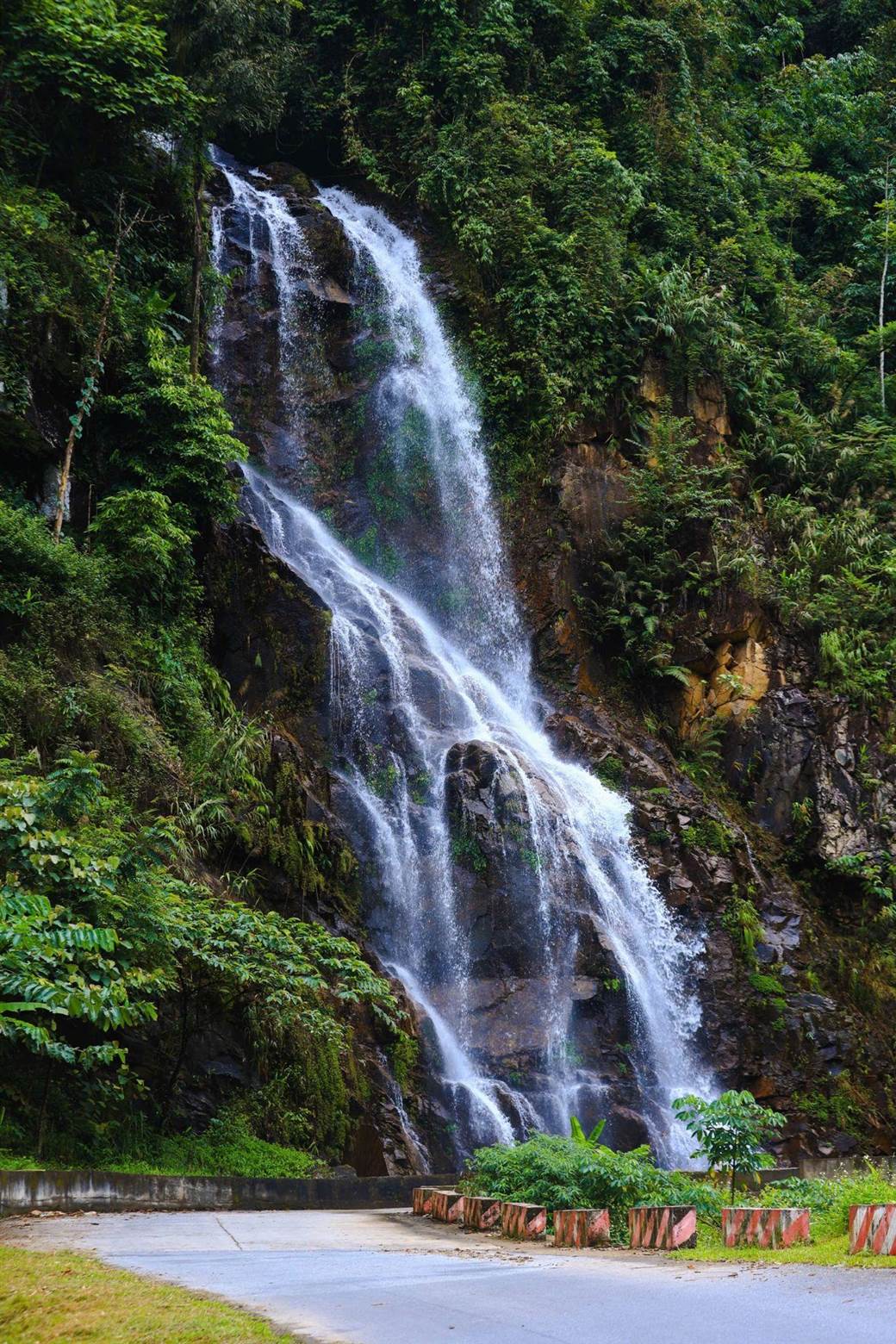
Vuong family mansion: the architectural marvel and cultural legacy of Ha Giang
6. Festivals, Events, & Crowds in September
September offers a distinctive cultural landscape in Ha Giang, with several smaller local festivals taking place as communities prepare for the harvest season. These events provide authentic glimpses into ethnic minority traditions without the crowds that characterize later autumn celebrations. Visitors might encounter ceremonies related to agricultural cycles, particularly in Hmong, Dao, and Tay communities throughout the province.
Tourism volume during September remains moderate, creating a balanced experience with sufficient services available while avoiding the congestion of peak season. Weekends see an increase in domestic Vietnamese tourists, particularly at popular spots like Ma Pi Leng Pass and Lung Cu Flag Tower. Weekday visitors often enjoy famous viewpoints with just a handful of other travelers, creating more contemplative experiences at iconic locations.
Photography enthusiasts particularly appreciate September’s combination of dramatic weather, changing landscapes, and fewer visitors. The month offers opportunities to capture atmospheric scenes with morning mist, afternoon light on ripening rice fields, and increasing clarity for distant mountain vistas. This photogenic quality, combined with the moderate tourist numbers, makes September increasingly popular among serious photographers seeking portfolio-worthy landscape images.
6.1 Local Celebrations
September features several localized celebrations tied to the agricultural calendar and ethnic traditions. These events occur with less predictable scheduling than major festivals, often determined by lunar calculations or local community decisions. In Hmong villages, travelers might encounter “new rice” ceremonies where communities celebrate the first harvest of young rice with music, dance, and communal meals.
Dao communities often hold ancestor worship ceremonies during this transitional season, particularly around the time of the Mid-Autumn Festival (which sometimes falls in September depending on the lunar calendar). These more intimate gatherings typically include incense offerings, traditional music, and the preparation of special foods. Unlike commercialized festivals in more touristic areas, these ceremonies maintain their authentic cultural significance.
Markets throughout Ha Giang become increasingly vibrant as September progresses and harvest preparations begin. The famous Sunday markets in Dong Van and Meo Vac display a wider variety of agricultural products, traditional crafts, and food items compared to the rainier summer months. These weekly gatherings serve as both commercial and social events, where different ethnic groups convene to trade goods, share news, and maintain community bonds.
6.2 Tourist Volume Trends
September represents a sweet spot in Ha Giang’s tourism calendar, offering a balanced experience between the quieter summer months and the crowded autumn peak. Early September sees primarily independent travelers and small groups, creating a relaxed atmosphere throughout the loop. Tourist numbers gradually increase toward month’s end as word has spread about the improving weather and pre-harvest landscape beauty.
Accommodation occupancy reflects this gradual increase, with guesthouses and homestays typically operating at 40-60% capacity compared to the 90-100% common in October and November. This moderate volume means travelers can often secure quality accommodations with just a few days’ notice, though weekend bookings at popular spots still benefit from advance reservation.
Visitor demographics in September show a higher proportion of experienced travelers seeking deeper cultural engagement. The month attracts fewer large tour groups and more independent explorers comfortable with the possibility of occasional weather adaptations. This creates a more contemplative atmosphere at major attractions and opportunities for meaningful interactions with local communities not always possible during the busier seasons.

7. Final Thoughts: Planning Your September Journey to Ha Giang
September presents a compelling case as perhaps the ideal month to experience Ha Giang’s natural splendor and cultural richness. The improving weather conditions, transitional landscapes, and moderate visitor numbers create a perfect balance for authentic exploration. Travelers willing to embrace occasional weather variability are rewarded with increasingly clear views, comfortable temperatures, and photogenic scenes throughout the loop.
When planning your September journey, consider these final recommendations from Phieu Travel’s experienced guides:
Book motorbikes with quality rain gear included, even as rainfall decreases
Schedule flexible 3-4 day itineraries rather than rushing through in 2 days
Allocate extra time at key viewpoints during clear weather windows
Combine major attractions with lesser-known villages for a more balanced experience
Engage local guides for at least portions of your journey to understand seasonal nuances
Pack for a wide temperature range, particularly if traveling in late September
With proper preparation, September offers one of the most rewarding experiences possible in this remarkable region. The month’s transitional nature—between rainy summer and dry autumn—mirrors Ha Giang itself: a place of contrasts, changes, and unexpected beauty. As you navigate the legendary curves of the Ha Giang Loop under September skies, you’ll discover why this emerging shoulder season increasingly attracts those seeking the province’s true essence.
For comprehensive support in planning your perfect Ha Giang adventure, including weather-optimized itineraries, quality gear, and knowledgeable local guides, visit Phieutravel.com. Our team specializes in creating memorable experiences tailored to Ha Giang weather September conditions, ensuring you capture the magic of northern Vietnam’s most spectacular landscape at its transitional best.
Read more:
- The Ultimate Guide to Ha Giang in March: Flowers, Weather & Tips
- Ha Giang in April: Where to Go, What to Do, Where to Eat
- Visiting Ha Giang in May? Weather, Cloud Hunting & Top Itineraries

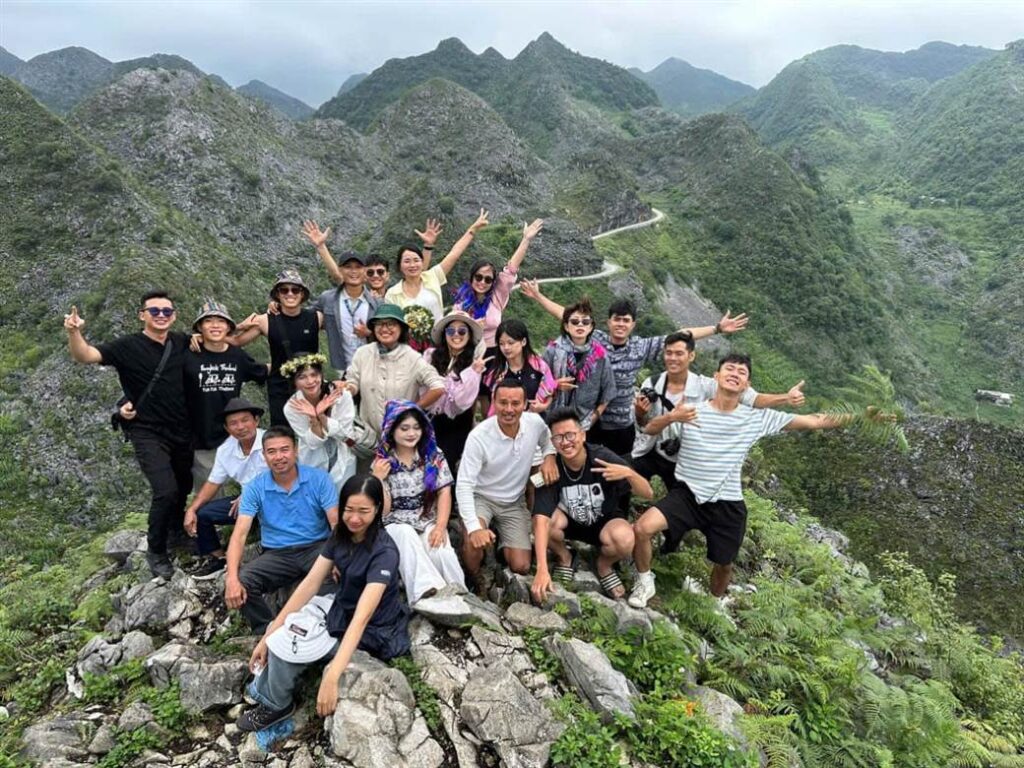
You Might Also Like
Ha Giang Weather in September: Complete Guide for Travelers
Exploring the magnificent Ha Giang Loop in September offers travelers a perfect balance of favorable[...]
Quan Ba Twin Mountains: Ha Giang’s Iconic Fairy Hills and Complete Travel Guide
The mystical Quan Ba Twin Mountains rise from the emerald valleys of Ha Giang like[...]
Vuong family mansion: the architectural marvel and cultural legacy of Ha Giang
Deep in Vietnam’s northern highlands, where mist-shrouded mountains meet terraced rice fields, stands a testament[...]
Ha Giang Loop Safety Tips: How to Ride Securely in Vietnam’s Northern Mountains
The Ha Giang Loop, with its winding mountain roads and breathtaking landscapes, offers one of[...]
The Ultimate Guide to the M-Shaped Curve on Ha Giang Loop
Vietnam’s remote northern province of Ha Giang hides a natural wonder that has captivated adventurous[...]
Most Beautiful Places to Visit in Vietnam: Essential Destinations and Insider Tips
Vietnam captivates travelers with its stunning landscapes, rich cultural heritage, and warm hospitality. From mist-shrouded[...]
Beyond the Beaten Path: Discovering Ha Giang Province in Northeast Vietnam
Ha Giang Province in Northeast Vietnam stands as one of the country’s last frontiers for[...]
Rainy season in Ha Giang: what to expect, when to go, and travel tips
Vietnam’s northern frontier reveals a different face during the rainy season, transforming Ha Giang’s limestone[...]